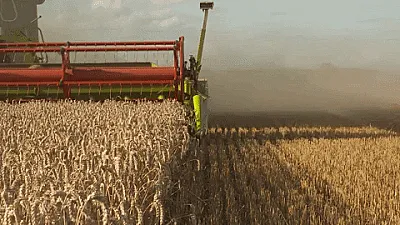Let's create continuous conversations about climate change education: Spreading the Sediment of Science!
Share your ideas and earn a $20 gift card! 💬 Learn More
Megafarms Up, Small Farms Down in Major US Agriculture Census
March 6, 2024

The past five years have not been kind to small family farms in the US. But COVID-era subsidies and rising grocery prices have fueled a rise in corporate-owned megafarms, according to the US Department of Agriculture’s 2022 Census of Agriculture.
The Census collates data gathered every five years from nearly two million farms across the nation. It offers a snapshot of the health of the US food production system. It shows that from 2017-2022, there were 1.9 million farms and ranches in operation. That’s a decline of 7% from the previous five years. Farms grew in size overall, though. Their average acreage was 463, up 5% over the same period. About 39% of all land in the US is used for agriculture.
Farming is still worthwhile, too. US farms produced $543 billion in products in 2022. That's $154 billion more than in 2017. Farmers’ average income rose to $79,790 per year. Still, only 43% of farms yielded profits.
Both the decrease in the number of farms and the sub-50%-profitability trends can be explained by the same factors, Agriculture Secretary Tom Vilsack explained in a press release.
“A combination of trade wars, the pandemic, and policies that furthered a ‘get big or get out’ (mindset) pushed more people out of farming in the five years since the last Census, than in any other Census period this century,” Vilsack wrote. That decline has been offset (and worsened, some experts say) by the rise in megafarms. They're owned by companies that can buy up land and dominate US food markets. In 2022, such farms made up only 4% of the total number of farms. But they controlled 67% of farmland.
Reflect: What are some of the benefits of having the nation’s food come from megafarms? Are there any drawbacks?
GIF courtesy @absoluteelyx on GIPHY.





